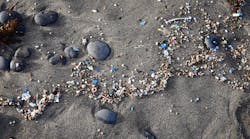It’s a story as old as Frankenstein. Science unlocks some incredible discovery, with the potential to change the world. Technology is developed to reap the advantages of that discovery, but in the implementation unexpected problems come to light. By the time those problems gestate to the point of crisis, the technology is out in the world, unable to be recalled, near-impossible to control.
Today, one Frankenstein’s Monster in the news is Artificial Intelligence. Yes, AI shows fantastic potential. You can read about how some contracting companies are making use of it in this month's Forum. But the downside is there for everyone to see. Deepfakes so convincing that no news source remains trustworthy. School students that no longer need to learn how to write a coherent sentence. Economic catastrophe as workers are replaced in their millions. Even weapon systems not controlled by human beings.
Back in May more than 300 executives and researchers working on AI signed a letter just one sentence long: “Mitigating the risk of extinction from AI should be a global priority alongside other societal-scale risks such as pandemics and nuclear war.” It remains to be seen if any comprehensive regulation will result.
Our other monster currently on the rampage is climate change. 2023 is shaping up to be the hottest year on record. As I write this, Phoenix has seen 29 consecutive days at or above 110º F.
It is interesting to contrast these two monsters. AI seems to have sprung on the scene just this year with ChatGPT grabbing headlines (even though AI was founded as an academic discipline in 1956). While the terms “global warming” and “climate change” have their origins in the 1980s, the use of fossil fuels that underlie the present crisis goes back to the wave of industrialization in the 19th century. One came at us much too slow; the other, much too fast.
If you’re reading this, it means you and your business have something to do with moving and/or heating water. So—at the risk of sending you home depressed at the state of the world—there are two more monsters particular to our industry I’d like to bring to your attention.
This is our annual water quality issue and we are publishing an update on the fight against Legionella with Dr. Janet Stout of the Special Pathogens Lab. It is a fight that Dr. Stout believes—with good testing and proper safeguards—we can win. But there is more than bacteria in the water supply.
Concentrations of microplastics in the oceans have surged with researchers now estimating there are 2.3 million tons floating in the sea. And they are making their way into human beings, with scientists finding the tiny particles in almost 80% of people tested according to a report in The Guardian. They absorb heavy metals, can break down into toxic substances, and their long-term effects are unknown.
Next, PFAS (per- and polyfluoroalkyl substances) or “forever chemicals” were developed in the 1940s and used in products like non-stick coatings and fire-fighting foams. A recent review from the CDC associated them with a host of health problems including cancer and liver disease. In June, chemical and manufacturing company 3M agreed to a $10.3 billion settlement for testing and clean up (although the final bill will probably be much higher).
Just as in the fight against Legionella, the fight against them will fall on plumbing professionals. You are the ones who will do the testing, remediation, and the system design that will help keep the public safe. It’s a noble, worthwhile fight. Let’s work now to get the resources and training you’ll need for it.


